Integrating Virtual Table Microservice
Virtual Table microservice is a generic microservice that allows to define data models and code extension services to support any new custom data additions. Once these data are available, you can access them through an API-based interface for Temenos product solutions.
Transact Explorer is now integrated with Virtual Tables microservice API to perform CRUD operations. It supports dynamic rendering of Virtual Table fields using API schema.
Configuring Virtual Table Microservice
Following are the ways to configure VTMS in Transact Explorer,
To configure the appconfig.json file,
- Under the transact-explorer-wa war file, navigate to /assets/config/appconfig.json.
- To enable the UI support, configure the below properties.
| Property | Description |
|---|---|
| domains | Indicates the list of domains to be configured to create VT. |
| baseUrl | Indicates the base URL of virtual table microservice API. |

Use the below externalized variables to enable VT,
- Dcom.temenos.te.ui.virtualTable.domains=customer,party,holdings
- Dcom.temenos.te.ui.virtualTable.baseUrl=http://<host:port>/ms-virtualtable-api/api/v1.0.0/

Creating VT Schema in Workbench
You can create VT schema in Workbench, as Transact Explorer does not support schema creation. Read the Managing Virtual Table using Workbench topic for more information.
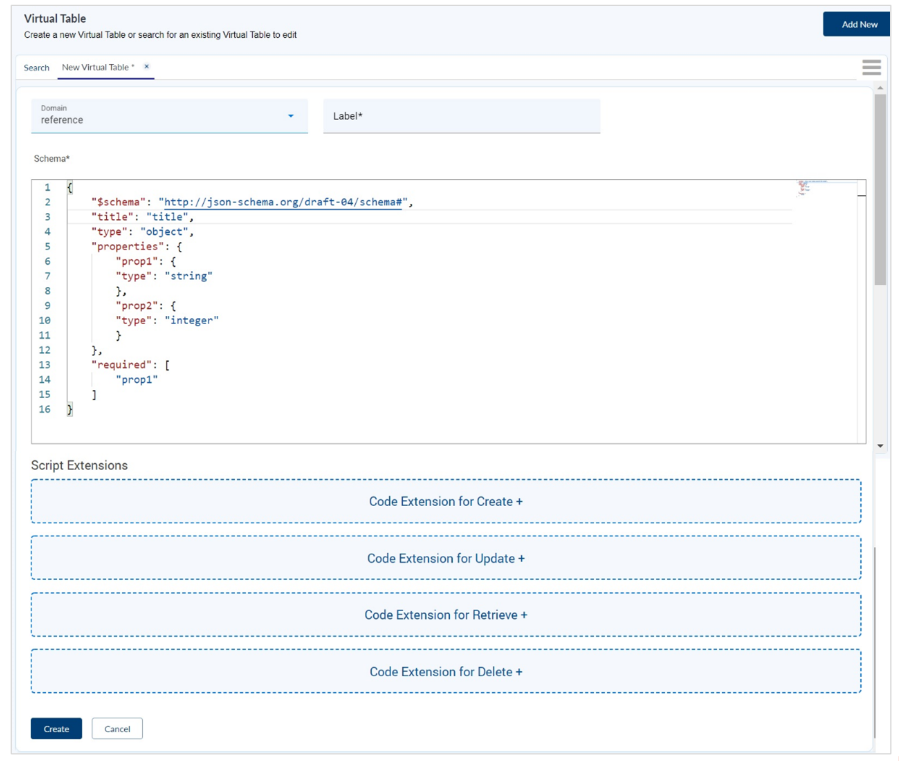
Selecting Domain
Enter VT in the command line to launch VT. You can select the domain from the Domain dropdown list and click  to list the virtual tables available in the selected domain.
to list the virtual tables available in the selected domain.
 .
.
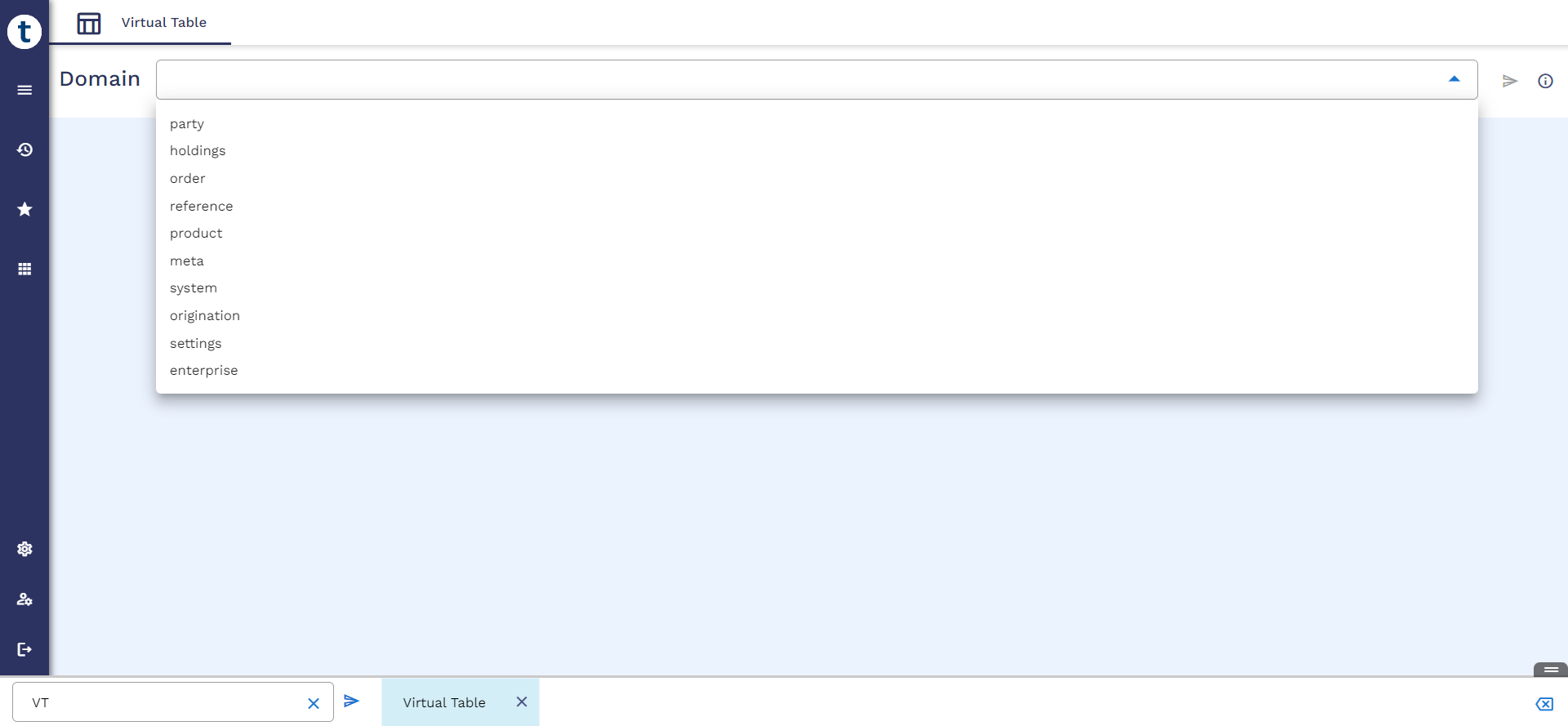
Viewing Virtual Tables
The List of Virtual Table screen contains the list of all tables available in the selected domain.
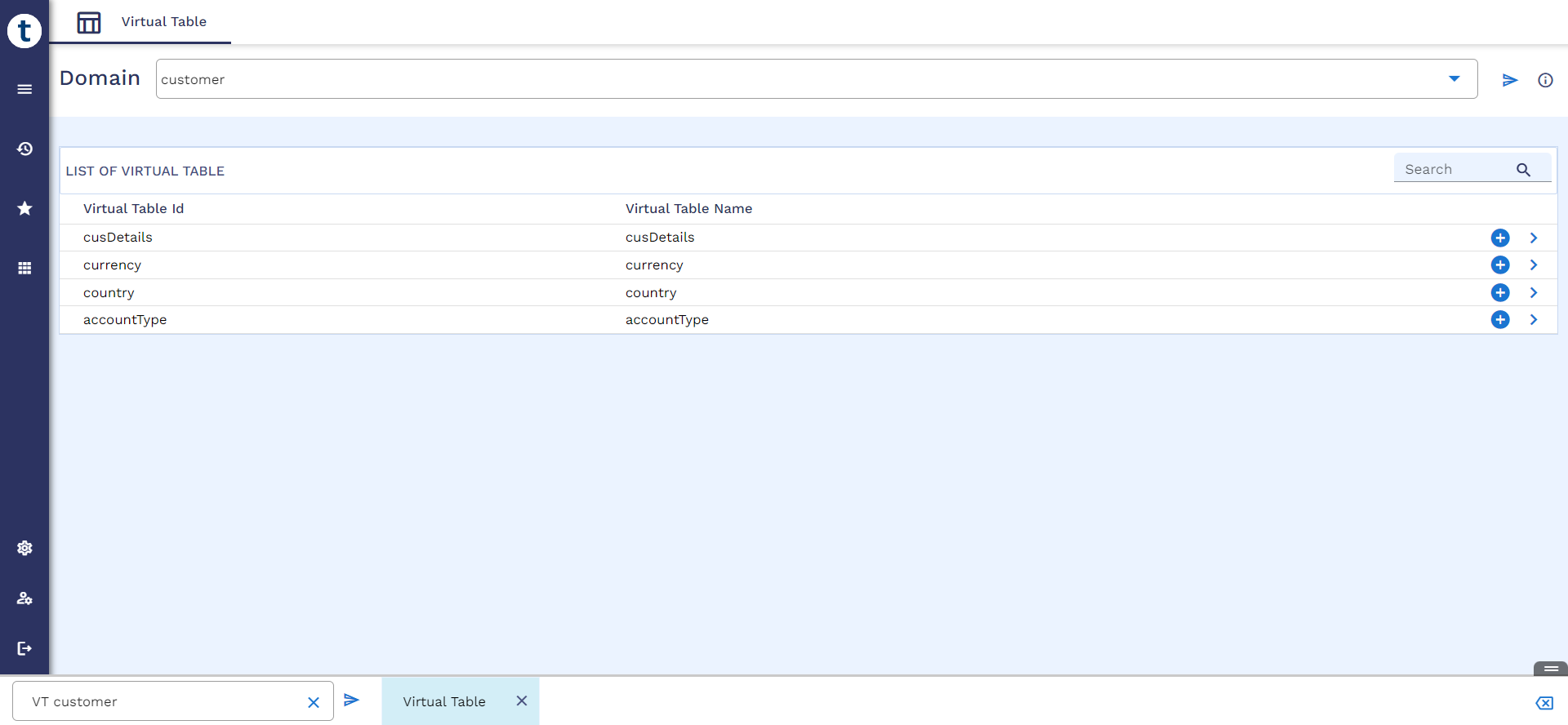
The following are the available components and actions:
| Components | Description |
|---|---|

|
Search and filter the required virtual table from the list. |

|
Create a new record within the selected table. |

|
View all available records in the selected table. |
Creating New Record
Following are the options available in the New Record screen:
| Components | Description |
|---|---|
| Record ID | Indicates the unique record ID. |

|
Enables you to commit the record. |

|
Enables you to return to the previous screen. |

|
Navigates you to the landing page of VT |

|
Navigates you to the Help page. Refer to the Help Page section for more information. |

|
Provide the Info on this screen. |
- Only after selecting or providing the record ID, the Commit icon is enabled.
- Transact Explorer stores all the records in the Virtual Table DB.
- When you click on any error message, the system instantly navigates you to the particular error field.
- When an existing record ID is entered while creating a new record, the system retrieves the existing record details and displays a warning message.
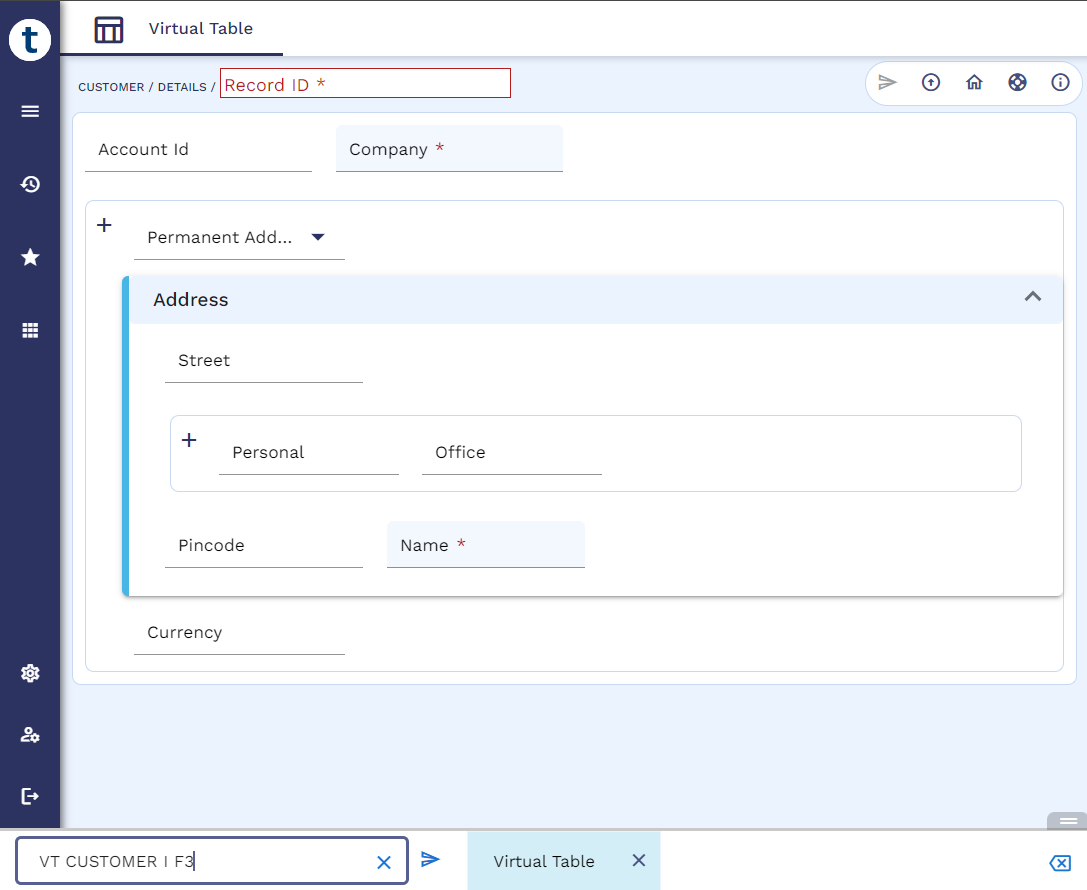
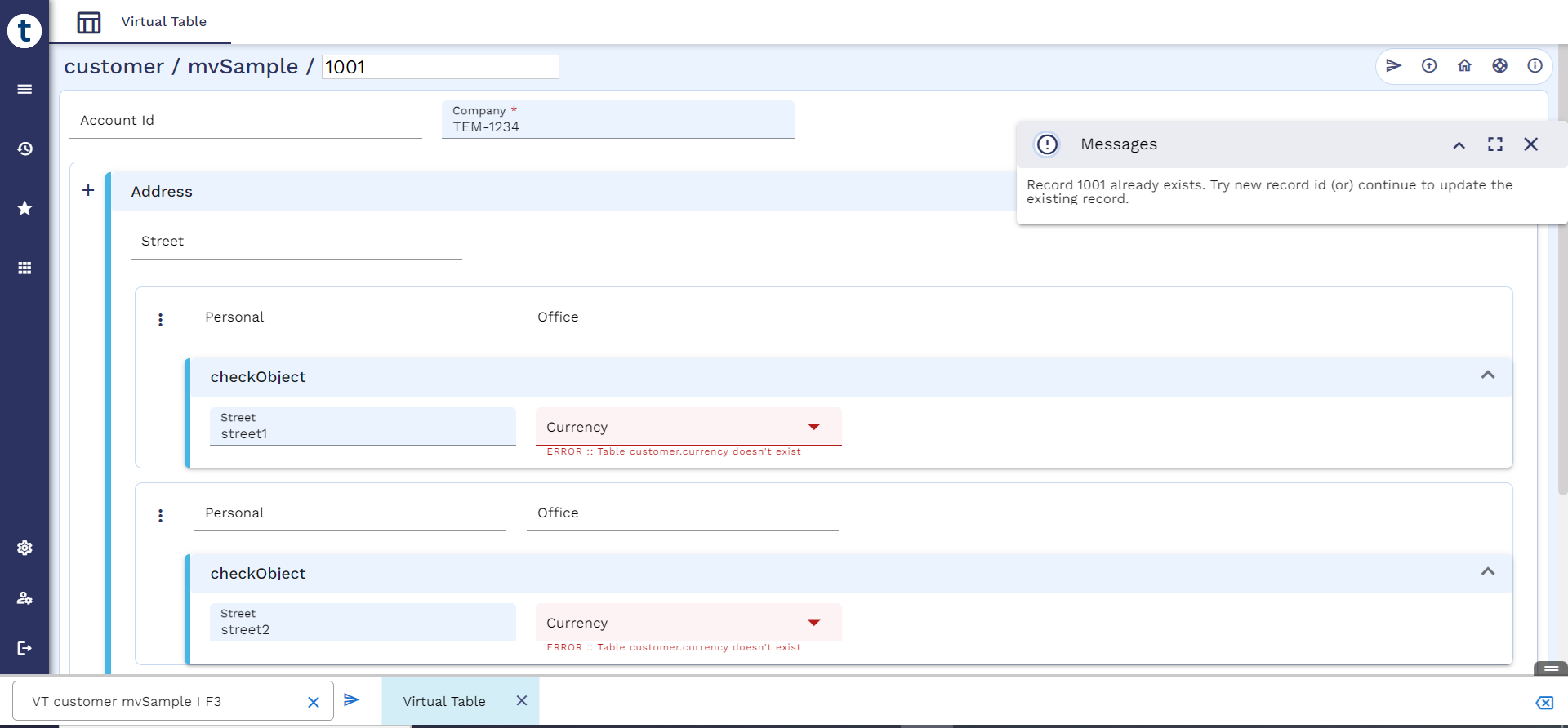
Viewing Records in Virtual Table
Click  to view all the available records in the selected virtual table.
to view all the available records in the selected virtual table.
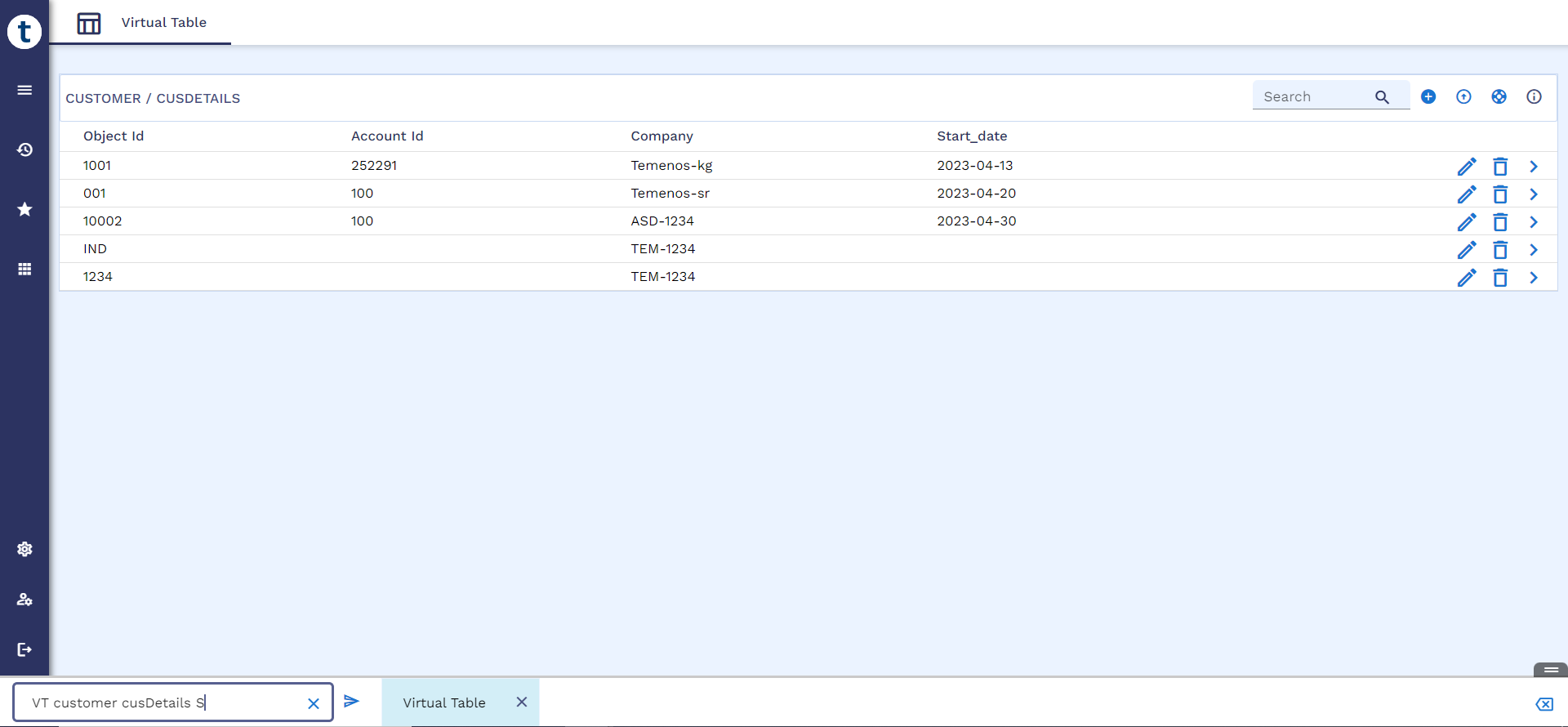
| Action | Description |
|---|---|

|
Enables to edit the selected record of the virtual table. Transact Explorer loads the update page based on the schema defined in the Workbench. |

|
Enables to delete the selected record. |

|
Enables to view the details of the record. All details are displayed as read-only fields. |
UI Validations
The validations mentioned in the schema are added as UI validations, where some of them are listed below.
- Pattern
- Required field
- Field type such as number, integer, string, and boolean
- Supported date format
- Lookuptable – You can also configure the drop-down values from another virtual table record by adding the relation in the parent schema as shown below.
Where,
customer is the domain and accountType is the virtual table.

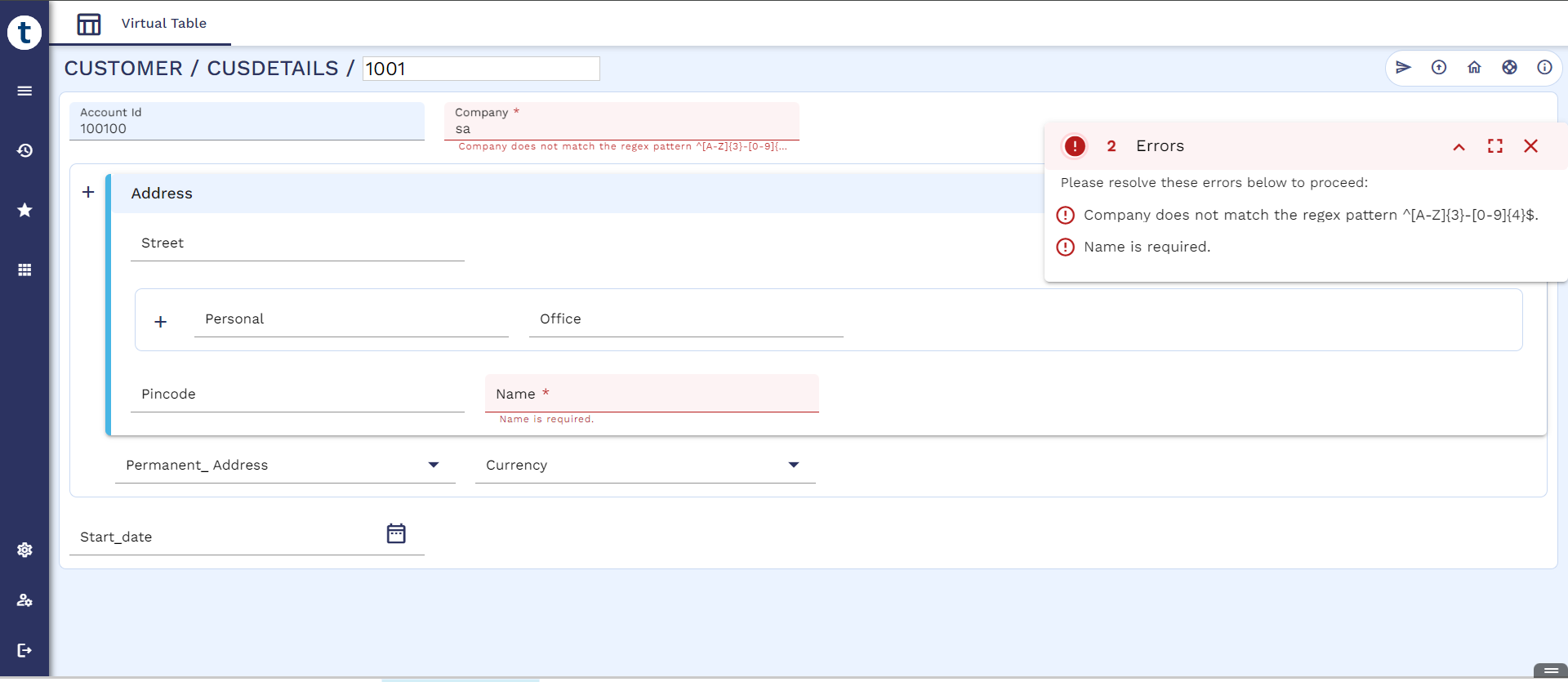
Help Page
Transact Explorer renders the Help page for Virtual Table based on the description attribute in the Schema definition. You can set the description attribute for both table and field for the Virtual Table.
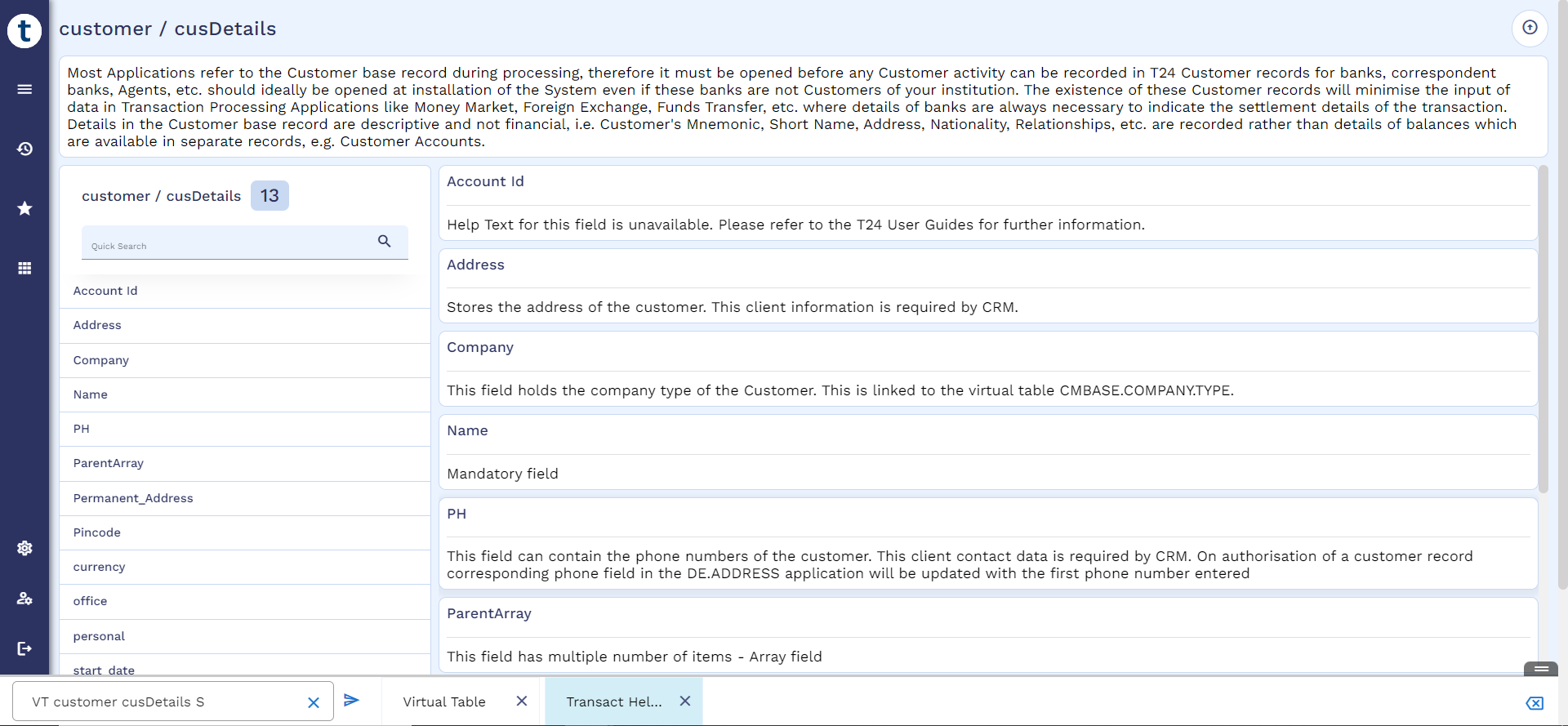
In this topic